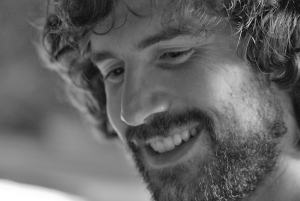Stellar structures, evolution, and explosions (WS 2016/2017)
Prof. Dr. F. Röpke, L. Horst, Dr. P. Edelmann, Dr. S. Jones, Dr. S. Ohlmann
(University of Heidelberg)
For more information, see the
teaching page of the PSO group at HITS.
Computational Astrophysics (SS 2015)
Prof. Dr. F. Röpke, Dr. P. Edelmann, S. Ohlmann
(University of Heidelberg)
Expand
Lecture: Monday, 14-16h, Philosophenweg 12, kl. HS
Tutorial: (Every second) Monday, 16-18h, Philosophenweg 12, CIP-Pool
Syllabus
The subject of astrophysics are complex objects and phenomena. Seeking for a
theoretical understanding, a realistic description is required. To this end,
computers have become a major tool of research and with ever more powerful
computational resources and modern numerical techniques, a detailed modeling of
astrophysical objects has become feasible. Based on general strategies to
numerically model astrophysical phenomena, the course aims at describing some
recent developments in computational astrophysics.
Further Material
Further material (homework problems, slides) are available at the
teaching page of the PSO group at HITS.
Theoretische Astrophysik (SS 2014)
Prof. Dr. F. Röpke, S. Ohlmann
(University of Würzburg)
Expand
Vorlesung: Freitag, 12-14 Uhr, Seminarraum 31.00.017
Übung: Dienstag, 10-12 Uhr, Seminarraum 31.00.017
Weitere
Vorlesungsinformationen.
Am Dienstag, den 15.04.14, wird eine Vorlesung stattfinden. Die erste Übung
wird am Dienstag, den 29.04.14 stattfinden.
Am Dienstag, den 17.6.14 findet eine Vorlesung statt, die Übung findet am 20.6. statt.
Am Dienstag, den 8.7.14 findet eine Vorlesung statt, die Übung findet am 11.7. statt.
Übungsblätter
Die Übungsblätter sind passwortgeschützt, die Zugangsdaten werden
in der Vorlesung mitgeteilt werden.
Zusammenfassung
Das Ziel dieser Vorlesung ist ein besseres Verständnis der Aspekte
der theoretischen Physik, die für astrophysikalische Phänomene wichtig sind.
Dabei werden Methoden zur theoretischen Beschreibung der zugrundeliegenden
Prozesse vermittelt und die entsprechenden Themen mit astrophysikalischen Beispielen
veranschaulicht.
- Überblick über die Beziehungen zwischen Forschungsgebieten der Astrophysik und den Hauptdisziplinen der Physik
- Himmelsmechanik
- Statistische Physik, Thermodynamik und astrophysikalische Zustandsgleichungen
- Grundlagen der Sternstruktur und -entwicklung
- Grundlagen des Strahlungstransports
- Grundlagen der Hydrodynamik, Flussunstetigkeiten und -instabilitäten
- Dynamische Phänomene in der Astrophysik: Weiße Zwerge, Chandrasekhar-Masse und thermonukleare Supernovae; Gravitationskollaps, Neutronensterne und Neutrinogetriebene Supernovae
Prüfung
Am Ende des Semesters wird eine mündliche Prüfung stattfinden.
Voraussetzung zur Teilnahme an der Prüfung sind 50% gelöste
Aufgaben in der Übung.
Weitere Informationen
Hier gibt es die
Folien zur Vorlesung.
Weiteres Material, wie z.B. Skripte und Vorlesungsfolien finden Sie auf
Prof. Röpkes homepage.
Computational Astrophysics (WS 2013/2014)
Prof. Dr. F. Röpke, Prof. Dr. C. Klingenberg, S. Ohlmann
(University of Würzburg)
Expand
Lecture: Thursday, 10-12h, seminar room 31.01.008
Tutorial: Tuesday, 10-12h, seminar room 31.01.008
The next lecture will be on Thursday, 24.10.2013.
Syllabus
The subject of astrophysics are complex objects and phenomena. Seeking for a
theoretical understanding, a realistic description is required. To this end,
computers have become a major tool of research and with ever more powerful
computational resources and modern numerical techniques, a detailed modeling of
astrophysical objects has become feasible. Based on general strategies to
numerically model astrophysical phenomena, the course aims at describing some
recent developments in computational astrophysics.
Examination
At the end of the semester, an oral examination will be conducted. The prerequisite for taking the examination
is reaching 50% solved homework problems compared to the total number of homework problems.
The material for the examination includes in the slides from Prof. Röpke everything up to SPH and the
slides from Prof. Klingenberg without MHD.
Problem Sets
In order to download the problem sets, you need a password which is provided in the lecture.
| Set 1 |
Tutorial on Tuesday, 29.10.2013 |
Hand in until Monday, 28.10.2013, 12pm |
| Set 2 |
Tutorial on Tuesday, 5.11.2013 |
Hand in until Monday, 4.11.2013, 12pm |
| Set 3 |
Tutorial on Tuesday, 12.11.2013 |
Hand in until Monday, 11.11.2013, 12pm |
| Set 4 |
Tutorial on Tuesday, 26.11.2013 |
Hand in until Monday, 25.11.2013, 12pm |
| Set 5 |
Tutorial on Tuesday, 03.12.2013 |
Hand in until Monday, 02.12.2013, 12pm |
| Set 6 |
Tutorial on Tuesday, 10.12.2013 |
Hand in until Monday, 9.12.2013, 12pm |
| Set 7 |
Tutorial on Tuesday, 16.12.2013 |
Hand in until Monday, 17.12.2013, 12pm |
| Set 8 |
Tutorial on Tuesday, 21.01.2014 |
Hand in until Monday, 20.01.2014, 12pm |
| Set 9 |
Tutorial on Tuesday, 28.01.2014 |
Hand in until Monday, 27.01.2014, 12pm |
Further Material
There is a lecture information sheet available.
Further material, e.g. scripts and lecture slides, are available from
Prof. Röpke's homepage.
Older lectures
- Theoretische Astrophysik (SS 2013) — Prof. Dr. F. Röpke, S. Ohlmann (University of Würzburg)
- Computational Astrophysics (WS 2012/2013) — Prof. Dr. F. Röpke, S. Ohlmann (University of Würzburg)
- Theoretische Astrophysik (SS 2012) — Prof. Dr. F. Röpke, S. Ohlmann (University of Würzburg)
- Höhere Mathematik (SS 2009 - SS 2011) — Tutor at Karlsruhe Institute of Technology
